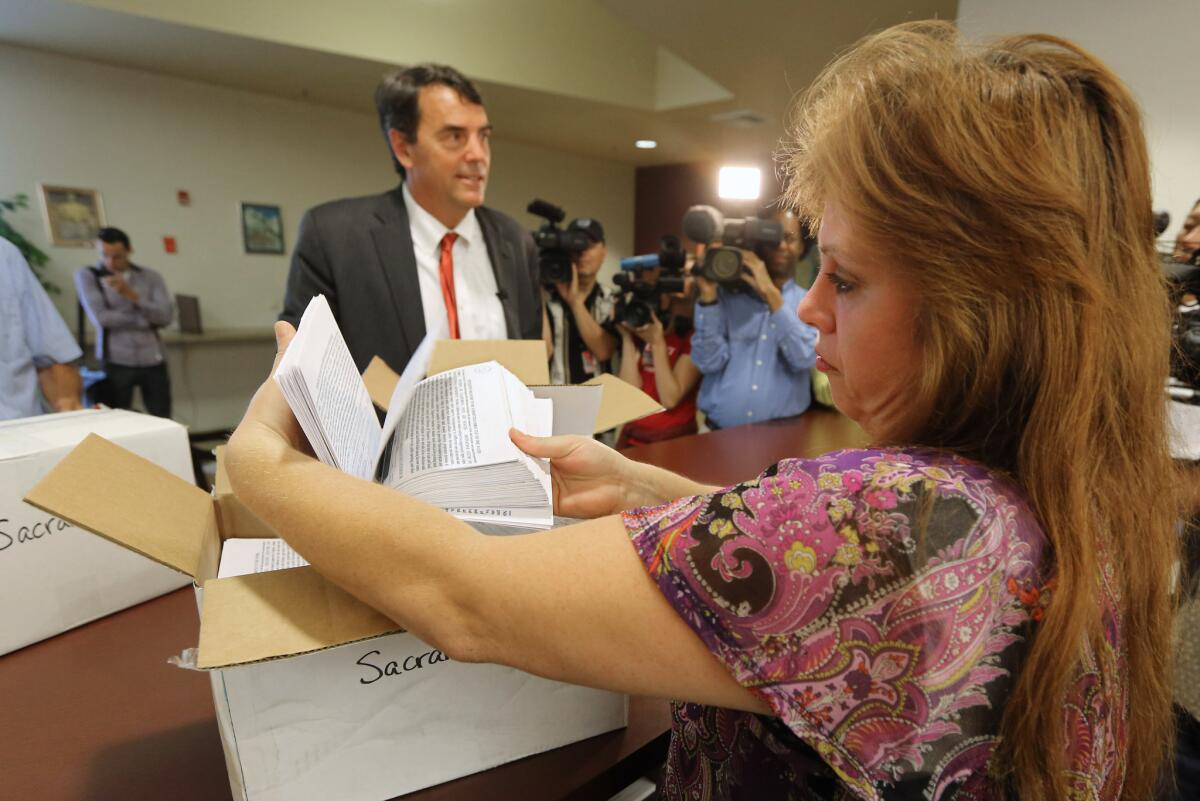Editorial: Hearings on California ballot initiatives will help voters at the polls

The elections manager for the Sacramento County Registrar of Voters makes a quick inspection of some of the petitions turned in that would place a ballot initiative before voters asking to split California into six separate states on July 15, 2014.
New state rules that could help de-clutter the California ballot kicked in this year, and they couldn’t have come at a better time. A daunting number of major propositions may qualify for the November 2016 ballot, and the initiative reform package passed last year gives the Legislature a valuable role in airing the pros and cons of such proposals before they’re put to a vote. Lawmakers should fulfill that duty sooner rather than later.
Among the more than 100 initiatives submitted to the California attorney general’s office so far are proposals to end the state ban on recreational marijuana, outlaw capital punishment, limit the sale of guns and ammunition, hike the statewide minimum wage, levy new taxes and sell school construction bonds. Though most won’t collect enough signatures to qualify, and seven have already failed (including, happily, a referendum to overturn the law banning personal belief exemptions for vaccination of public school students), election experts still predict it will be a crowded ballot.
That’s not ideal for voters who will be asked to make decisions on very complicated and life-altering policies. And it’s not ideal for the sponsors of the initiatives, either. When confronted by too many measures, voters tend to just say no.
Having early hearings can help the process in two ways. First, the sessions give voters more substantive information on what an initiative will do, including the possible unintended consequences. Second, and more important, they allow sponsors and lawmakers to address issues by passing legislation instead of going to the ballot.
That’s because another part of the reform package allows proponents to pull the plug on a measure as late as June 30. And although lawmakers cannot yank or tinker with an initiative, they can offer a legislative solution. Say, for example, legislators are inclined to support repealing the ban on ferrets as pets (an actual proposal). The joint committee can propose a bill to accomplish the same thing, persuading ferret proponents to withdraw the measure.
Another new rule gives the public 30 days to comment on would-be initiatives after they are filed with the attorney general. Sponsors can then amend their measures to address complaints and potential problems before they start gathering signatures.
One concern is that the Assembly and Senate leaders will get so wrapped up in whatever political drama unfolds over the next few months that they will drag their feet on the hearings until June. That’s too late. Legislative hearings can improve the initiative process — but not if they are held at the last minute, when there’s no time left for sponsors to change course.
Follow the Opinion section on Twitter @latimesopinion and Facebook
More to Read
A cure for the common opinion
Get thought-provoking perspectives with our weekly newsletter.
You may occasionally receive promotional content from the Los Angeles Times.






